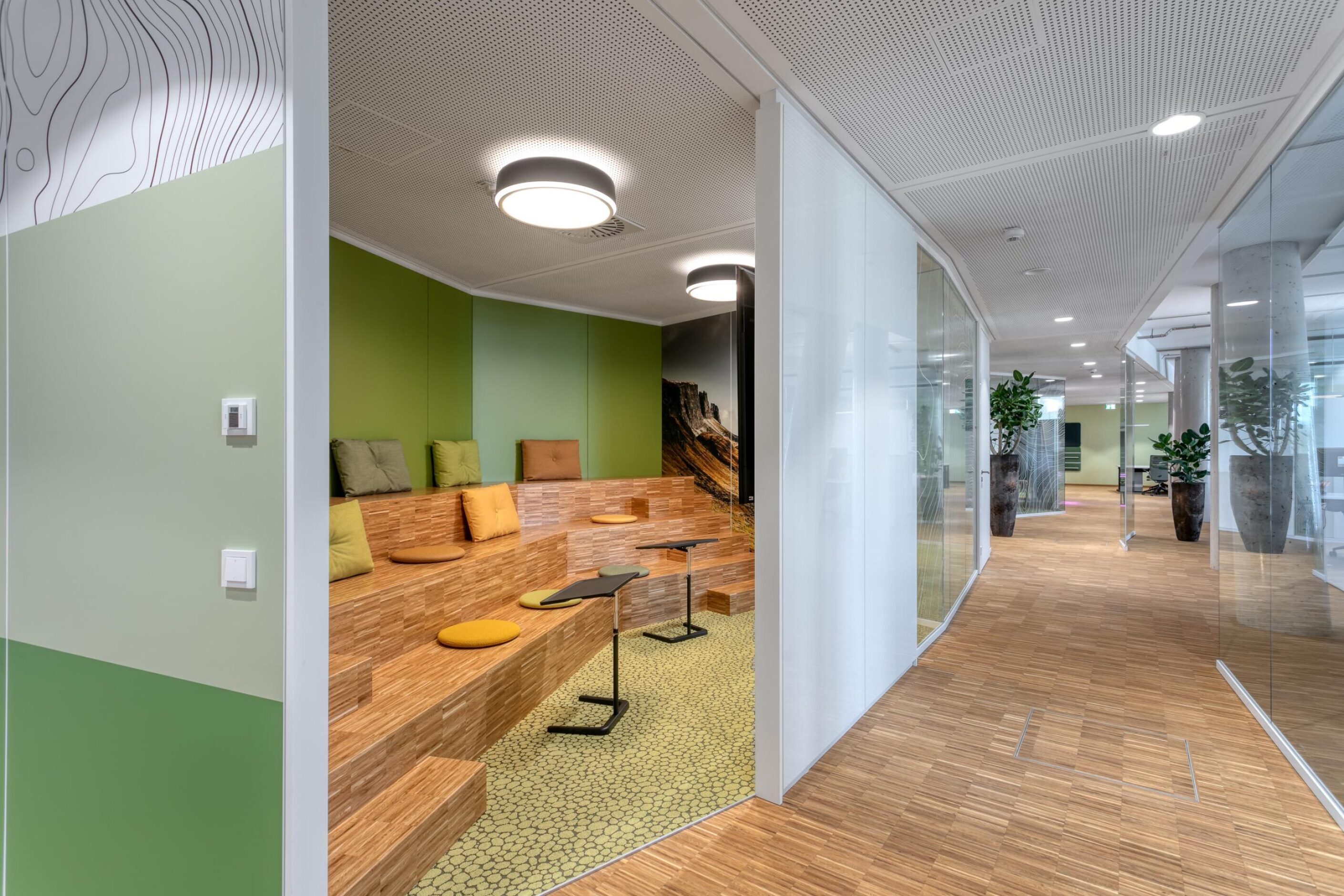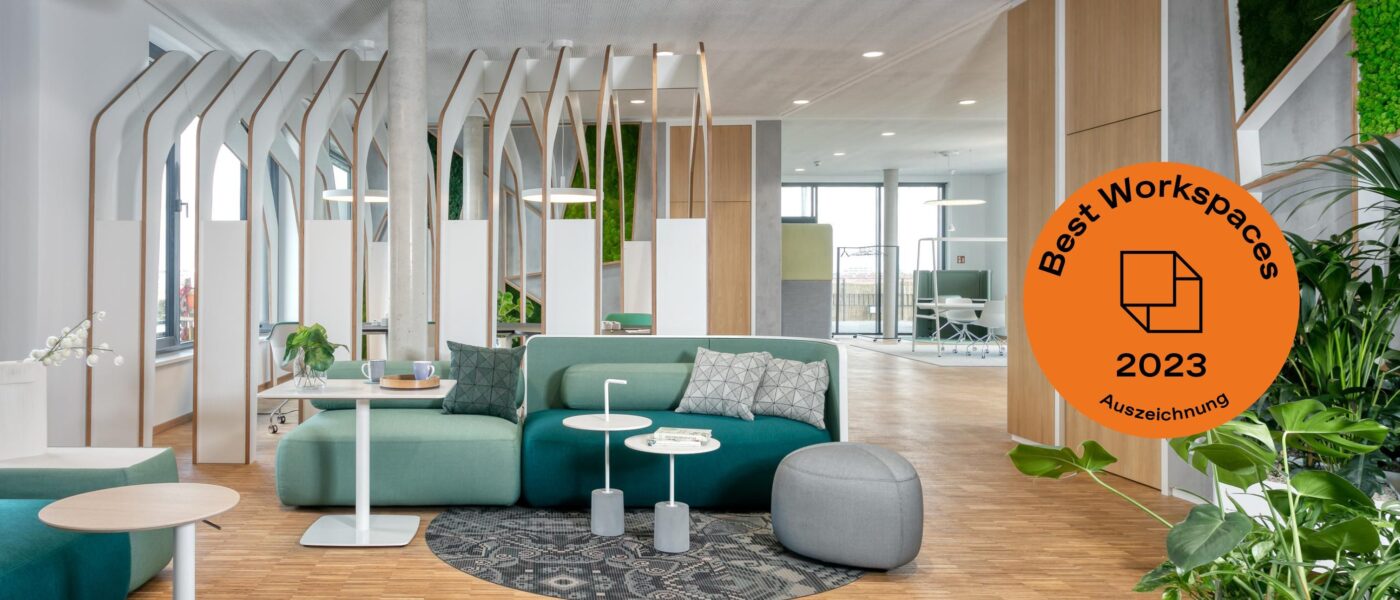
From a place of work to a place of well-being
At Disy, office design brings corporate culture to life
Especially in view of the ongoing home-office boom, many entrepreneurs are asking themselves whether investment in a physical office is still worthwhile, and some even whether an office is still in keeping with the times? After all, the majority of office workers no longer want to go back to the office full time, and instead are opting for a mixture of home- and office-based work.
In purely arithmetical terms, this means lower space requirements in the office. Desk workstations can be occupied multiple times according to the desk-sharing principle, and the increasing number of digital or hybrid meetings is making large meeting rooms increasingly superfluous.
In view of such considerations, the decision of Karlsruhe-based IT service provider Disy seems downright contradictory: In the middle of the pandemic, the management rented additional space and hired us to design, build and furnish a custom office. Nevertheless, now everyone is in agreement – the investment has definitely proved worthwhile!
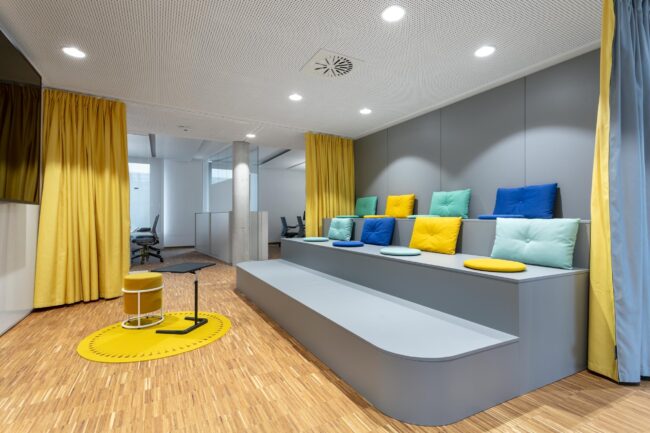
Growing demands, including on the office
With advancing globalisation and digitalisation, the world of work is becoming increasingly complex. Across industries, companies are feeling the brunt of growing innovation and competitive pressures, driven by an escalating shortage of resources, both raw materials and personnel.
Under these conditions, efficiency and effectiveness are more important than ever. But how do you develop innovations more effectively and efficiently? In addition to technical know-how, a decisive factor for success is creativity.
The problem is creativity is difficult to plan. Companies like Disy, however, can support their employees with creative processes by creating the right environment. This applies both to digital and physical spaces. Thus, the office, its design and its equipment indirectly become a competitive factor.
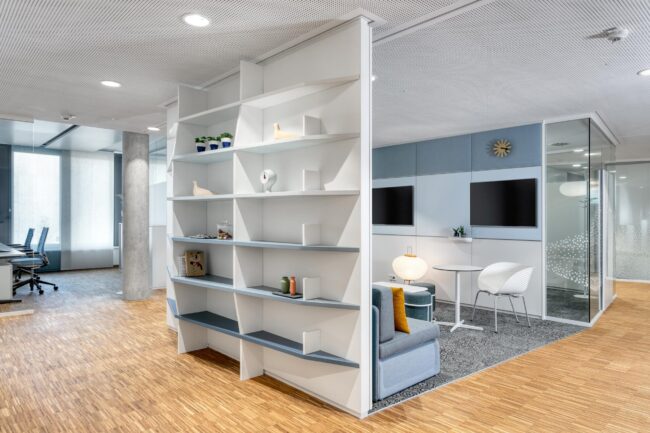
The interaction between man and space
Creative processes in particular are strongly influenced by external factors. Creativity is closely linked to inspiration for good reason. Innovations often emerge in the course of personal interaction with others. However, our spatial environment is at least just as important for creative processes. The rule of thumb is as follows: Where you feel comfortable, creativity comes easier.
The transformation of an office into a place of well-being calls for more than just a classic workstation consisting of a desk and office chair. Feeling good starts in the office with the architecture and structure of the rooms. Nature or structures that have grown over the years, such as in cities, can serve as models.
While in traditional offices the corridor often forms the focal point along which the individual rooms are lined, at its new office location Disy has taken a different approach. Here at the centre of each floor are various spaces for interaction. The individual work areas are arranged around these spaces along the strip windows. The special feature here is the routing, which completely dispenses with straight lines and right angles and thus opens up new and inspiring perspectives from every angle.
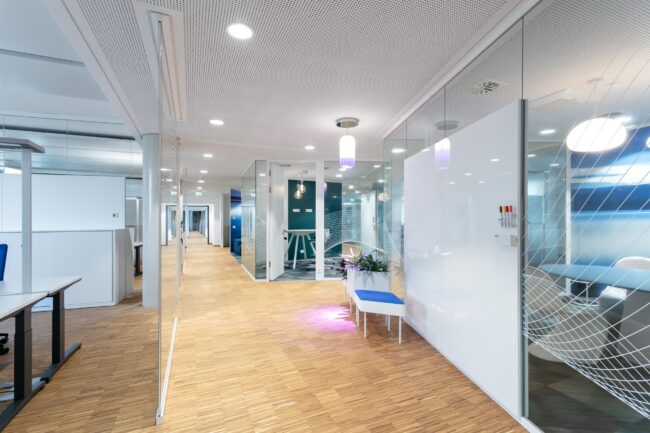
From corporate culture to spatial concept
The office is becoming a competitive factor not only with regard to the efficiency and creativity of employees. Even in the “war for talent,” a modern office with high-quality furnishings can make all the difference. This is because, precisely in an increasingly digital and abstract working world, a company’s physical location is gaining in importance for many people. The office is becoming the place in which a company can makes its corporate growth or culture tangible.
Conversely, the corporate culture and areas of activity can serve as inspiration for the office design. At Disy’s new site, for example, the five thematic areas of Land, Air, Water, Energy and Urban, which form the basis for the company’s spatial concept and reflect the various application areas for its IT services.
Through the holistic interplay of colours, shapes, materials and furniture, rooms and room zones can thus become a multi-sensory experience. Particularly for employees who regularly switch between home office and face-to-face work, or for international colleagues who are rarely able to be on site, the office serves as an identity-forming element and offers them a “home”.
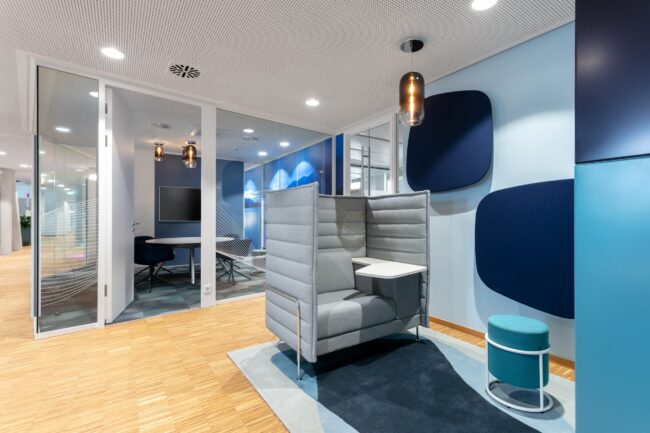
Where appreciation becomes visible
In addition to inspiration, corporate values and growth, individually designed offices also show their users one thing above all: that they are valued. At the same time, appearance in no way takes precedence over functionality. The decisive factor is the overall picture that emerges. If the feel-good factor is also right, the headquarters can also become the „heartquarters“ for all employees.
As a service provider in the highly specialised IT environment, Disy places the highest demands on its employees. The investment in a new office location was therefore also an investment in its own future. This is because the management is convinced that sustained top performance is only possible in an environment in which employees feel comfortable. From the very beginning, it wasn’t about numbers, but about people.
Our video shows what else was important to Managing Director Claus Hofmann and HR Manager Petra Dörr-Thern in the new office concept and how our interior designer Susanne Wermund implemented it on site. We have also compiled even more information on this feco project on the associated project page.
We are at your service.
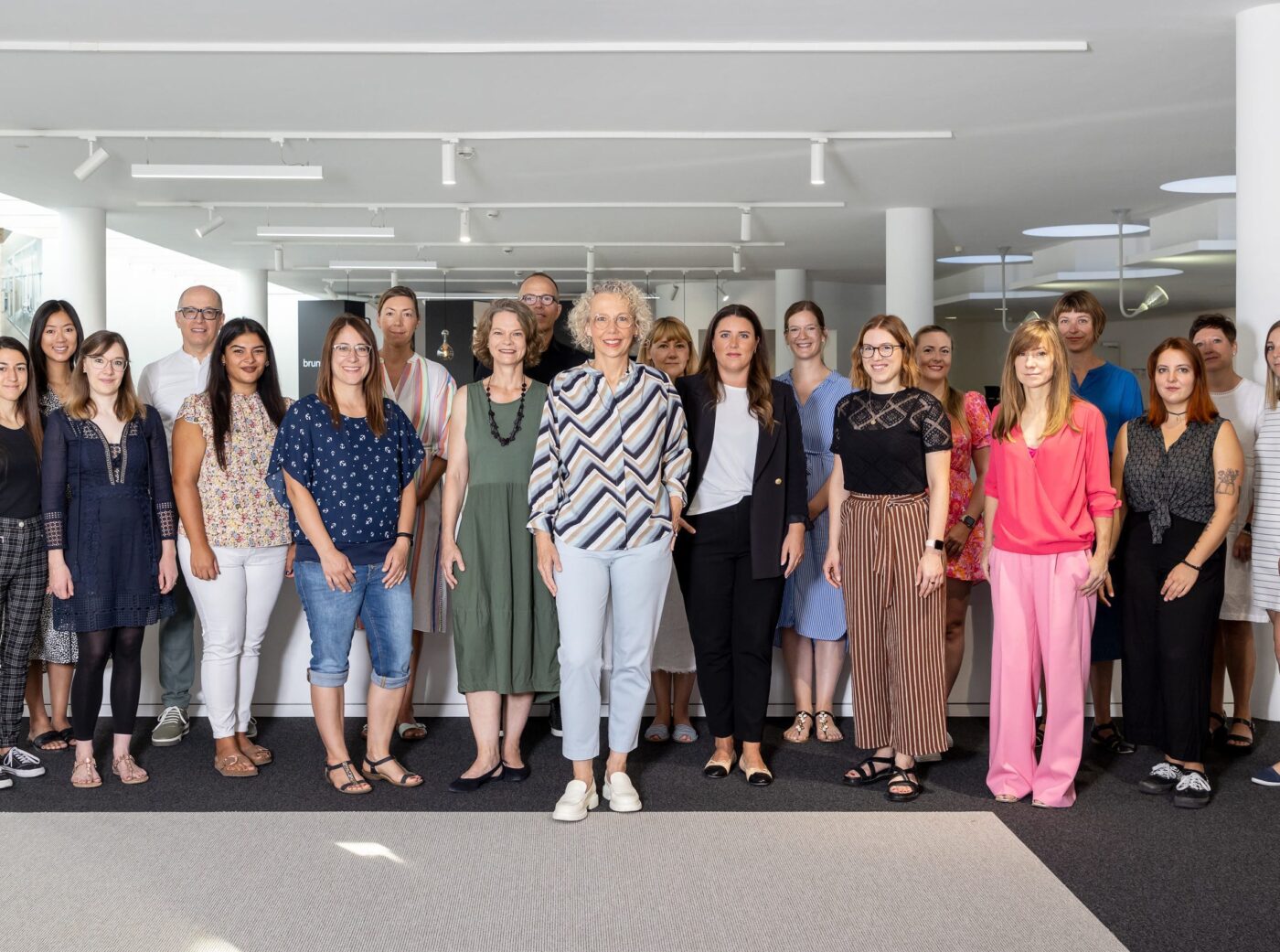
We are at your service.
Visit us in the feco-forum on more than 3.500 square meters.
Arrange a consultation